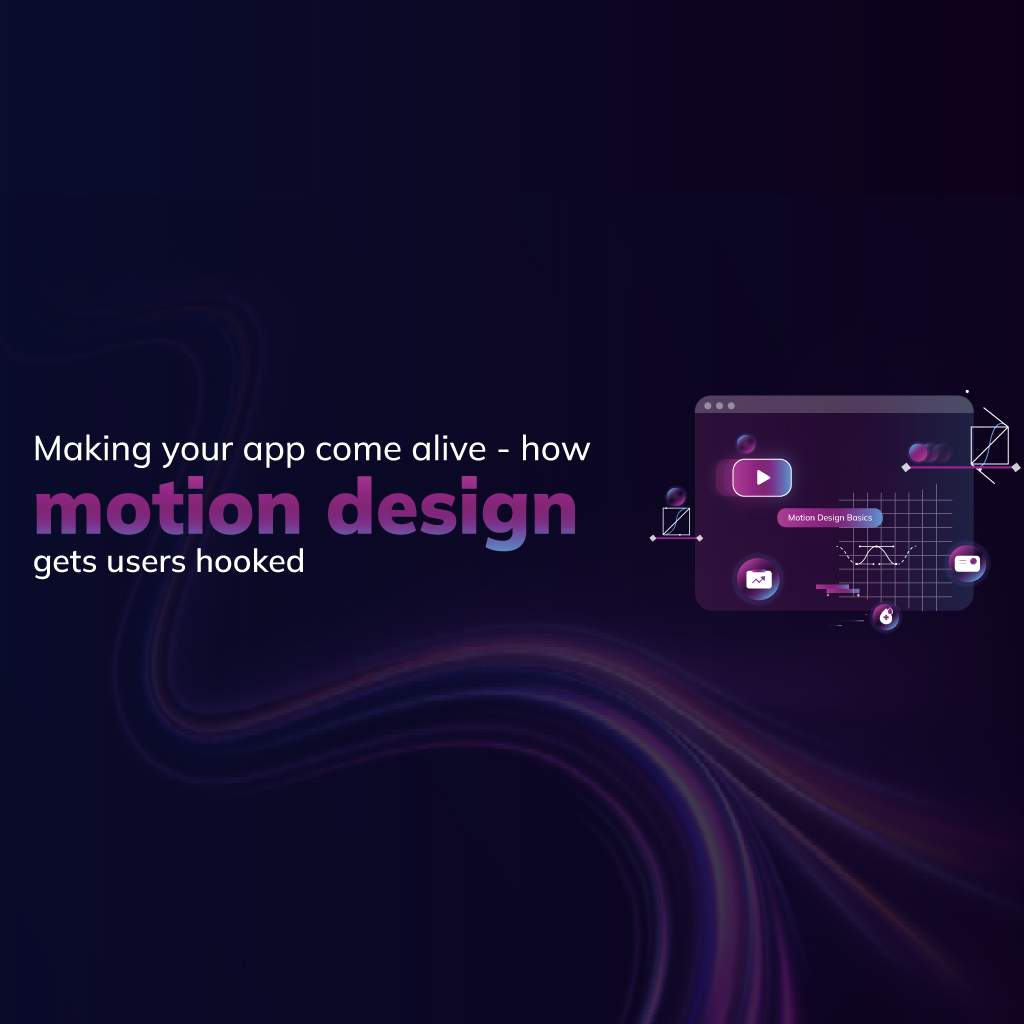Making your app come alive: How motion design gets users hooked
Last updated: 17-07-2025
Reading time: min

Making your app come alive: How motion design gets users hooked
Ever noticed how a little movement on your favorite apps just makes things feel... better? That's the magic of motion design in user interfaces (UI)! It's not just about looking fancy; it's about making your app more intuitive, enjoyable, and downright engaging for your users.
Think about it, a button that subtly changes when you tap it, a smooth transition between screens, or a playful animation that appears while something loads. These little touches of motion can make a huge difference in how people experience your app. It's like the difference between a static image and a captivating video.
Why bother with motion? It's more than just eye candy:
Animations play a crucial role in user experience, extending far beyond mere visual appeal. They serve as important guides, using motion to direct users' attention and clarify navigation pathways within an application, acting like a subtle visual cue. Furthermore, animations provide essential feedback, offering clear visual confirmation for user actions, such as taps, or indicating ongoing processes like loading, eliminating uncertainty about the system's status. By mimicking real-world physics, well-designed motion makes digital interactions feel more natural and intuitive, creating a smoother and less jarring user flow. Beyond functionality, animations offer an opportunity to inject personality and delight into a digital product, making the app feel more human, memorable, and enjoyable to use. Ultimately, this dynamic and engaging quality helps to retain users, encouraging them to stick around and explore the application further by adding an element of interest to the overall experience.
Motion design in action: Real-world examples:
Motion design is a ubiquitous element in well-crafted applications, manifesting in various effective ways. You can observe it in the smooth transitions between screens, where sliding or fading effects create a sense of fluid and connected navigation. Animated icons also play a role, subtly changing on hover or tap to provide clear feedback while adding a touch of playfulness. Even loading indicators benefit from motion design; creative animations can replace static spinners, making waiting times more engaging for users. Furthermore, microinteractions – small, delightful animations responding to specific user actions, like a heart icon filling upon liking something, enhance the interactive experience. Finally, motion design is often employed in onboarding flows, using animations to guide new users through an app's features in an interesting and easily understandable manner.
How motion design hooks your users:
Movement enhances user engagement in several key ways. First, it captures attention by leveraging our brain's natural tendency to be drawn to motion, with subtle animations guiding the user's focus toward important elements. Second, it improves understanding by visually illustrating relationships between different components and how they evolve over time. Additionally, well-placed motion can create emotional connections, evoking feelings of delight, satisfaction, or anticipation. Thoughtful animations also make experiences more memorable, helping an app stand out from competitors. Finally, movement reduces frustration by providing clear visual feedback, ensuring users always understand what’s happening, and minimizing confusion.
Getting started with motion in your UI:
When incorporating motion into your app, it's important to follow a few key principles. First, keep animations subtle; overdoing them can become distracting or even annoying, so the focus should be on enhancement rather than overwhelming the user. Motion should always serve a functional purpose, whether it’s providing feedback, guiding interactions, or improving clarity. Consistency is also crucial; maintaining a uniform animation style throughout your app creates a cohesive and polished experience. Additionally, testing and iterating based on user feedback ensures that your animations resonate effectively. Finally, consider performance; complex animations can slow down your app, so optimizing for speed and smoothness is essential for a seamless user experience.
Motion design in UI is no longer just a trendy add-on. It's a powerful tool that can significantly improve user engagement by making your app more intuitive, enjoyable, and memorable. When done right, it's the subtle magic that keeps users coming back for more. So, think about how you can bring your app to life with thoughtful and purposeful animations, and your users will thank you for it!